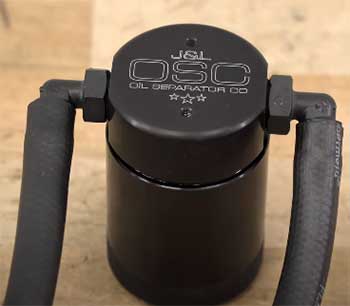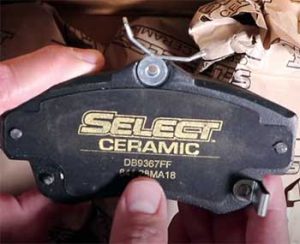If you’re a car enthusiast, you’ve likely heard of catch cans and their benefits in maintaining your engine’s health. The market is filled with various options, but in this article, we’ll dive deep into a comparison of two popular choices: the J&L and JLT catch cans.
We’ll examine their features, installation process, and performance to help you make an informed decision. So, buckle up and let’s get started!
A Brief Comparison Table
| Feature | J&L Catch Can | JLT Catch Can |
| Oil Separation | Baffled design | Multi-stage filtration |
| Design | Compact | Sleek |
| Capacity | Standard | Large |
| Construction | High-quality materials | High-quality materials |
| Installation | Easy | Simple |
J&L Catch Can: Overview

J&L is a reputable brand known for producing high-quality automotive parts, and their catch can is no exception.
This little device is designed to separate oil particles from the PCV (Positive Crankcase Ventilation) system, keeping your intake manifold clean and preventing carbon buildup.
Its compact design makes it easy to install in tight engine bays, while its durability ensures long-lasting performance.
Key Features
- Efficient oil separation: The J&L catch can uses a baffled design to separate oil particles from the crankcase gases, preventing them from being recirculated back into the intake manifold.
- Compact design: J&L has designed their catch can to be small and lightweight, making it easy to install in tight spaces.
- High-quality construction: The catch can is made from high-quality materials, ensuring durability and resistance to wear and tear.
- Easy installation: With a simple design and all necessary hardware included, the J&L catch can can be installed with minimal effort.
JLT Catch Can: Overview

JLT Performance is another renowned brand in the automotive world, offering a range of high-performance parts, including their catch can.
The JLT catch can is designed to keep your engine clean by preventing oil vapors from entering the intake manifold.
With a sleek design and solid construction, the JLT catch can is a popular choice among car enthusiasts.
Key Features
- Multi-stage filtration: The JLT catch can features a multi-stage filtration system that effectively separates oil particles from the crankcase gases.
- Large capacity: With a bigger canister, the JLT catch can holds more oil than its competitors, reducing the need for frequent emptying.
- Durable construction: The JLT catch can is made from high-quality materials that are resistant to wear and tear, ensuring a long service life.
- Simple installation: With easy-to-follow instructions and all necessary hardware included, the JLT catch can be installed in no time.
Performance Comparison of J&L And JLT Catch Can
Both the J&L and JLT catch cans have impressive features and are designed to keep your engine clean by preventing oil particles from re-entering the intake manifold. However, there are some differences in their performance that may sway your decision.
The J&L catch can uses a baffled design to separate oil particles, while the JLT catch can relies on a multi-stage filtration system. The multi-stage filtration in the JLT catch can offers a higher level of efficiency in oil separation, which may result in cleaner engine internals.
The capacity of the catch can is another factor to consider. With a larger canister, the JLT catch can holds more oil than the J&L catch can. This means you’ll need to empty the JLT catch can less frequently, which can be a significant advantage for those who want to minimize maintenance.
When it comes to installation, both catch cans are relatively simple to install. However, the J&L catch can’s compact design might be more appealing to those with limited space in their engine bays. On the other hand, the JLT catch can’s sleek design and larger capacity might be more attractive to those who prioritize aesthetics and performance.
In terms of construction, both catch cans are made from high-quality materials that ensure durability and resistance to wear and tear. This means that whichever catch can you choose, you can expect it to last for a long time and provide reliable performance.
Making The Decision: J&L/JLT Catch Can
Choosing between the J&L and JLT catch cans ultimately comes down to your preferences and priorities. Both catch cans are designed to serve the same purpose – keeping your engine clean and free from oil particles that can cause damage and reduced performance.
However, there are a few differences to consider when making your decision:
- Efficiency: The JLT catch can’s multi-stage filtration system provides a higher level of efficiency in oil separation compared to the J&L catch can’s baffled design. If you prioritize maximum oil separation, the JLT catch can might be the better choice.
- Capacity: The JLT catch can has a larger capacity than the J&L catch can, meaning it can hold more oil and requires less frequent emptying. If you prefer less maintenance, the JLT catch can might be more appealing.
- Installation: While both catch cans are easy to install, the J&L catch can’s compact design may be more suitable for those with limited space in their engine bays. If you have a tight engine bay, the J&L catch can could be a better fit.
- Aesthetics: The sleek design of the JLT catch can might be more attractive to those who prioritize the appearance of their engine bay. If you value aesthetics, the JLT catch can may be your preferred choice.
Ultimately, both the J&L and JLT catch cans are excellent choices for maintaining your engine’s health and performance. By considering the factors outlined above, you can make an informed decision that best suits your needs and preferences.
Frequently Asked Questions (FAQ)
No, J&L and JLT are different brands. J&L is known for producing high-quality automotive parts, while JLT Performance specializes in offering a range of high-performance parts for various applications.
A JLT catch can is designed to separate oil particles from the crankcase gases in the PCV system, preventing them from entering the intake manifold. This helps maintain a clean engine and reduces the chances of carbon buildup, which can lead to reduced performance and engine damage.
While both oil catch cans and oil air separators serve the same purpose of preventing oil particles from re-entering the intake manifold, they use different methods. Oil catch cans use baffles or filters to separate oil particles from the crankcase gases, whereas oil air separators use a centrifugal force to separate the oil particles. Oil air separators are generally more effective at removing oil particles but are also more expensive and may require more maintenance.
Oil catch cans themselves are not illegal; however, their use may be restricted in certain areas due to emissions regulations. Since catch cans collect oil particles and prevent them from being burned in the combustion process, they can cause an increase in overall emissions. This may result in the vehicle failing emissions tests or being deemed non-compliant with local regulations. Before installing an oil catch can, it’s essential to verify the regulations in your area and ensure that your vehicle remains compliant.
In Conclusion
The J&L and JLT catch cans are both solid options for those looking to improve their engine’s health by preventing oil particles from entering the intake manifold.
By comparing their features, installation process, and performance, we hope that this comprehensive article has helped you make an informed decision about which catch can is right for you.
Remember to always check your local regulations before installing any aftermarket parts, including catch cans, to ensure compliance with emissions standards. Happy driving!



